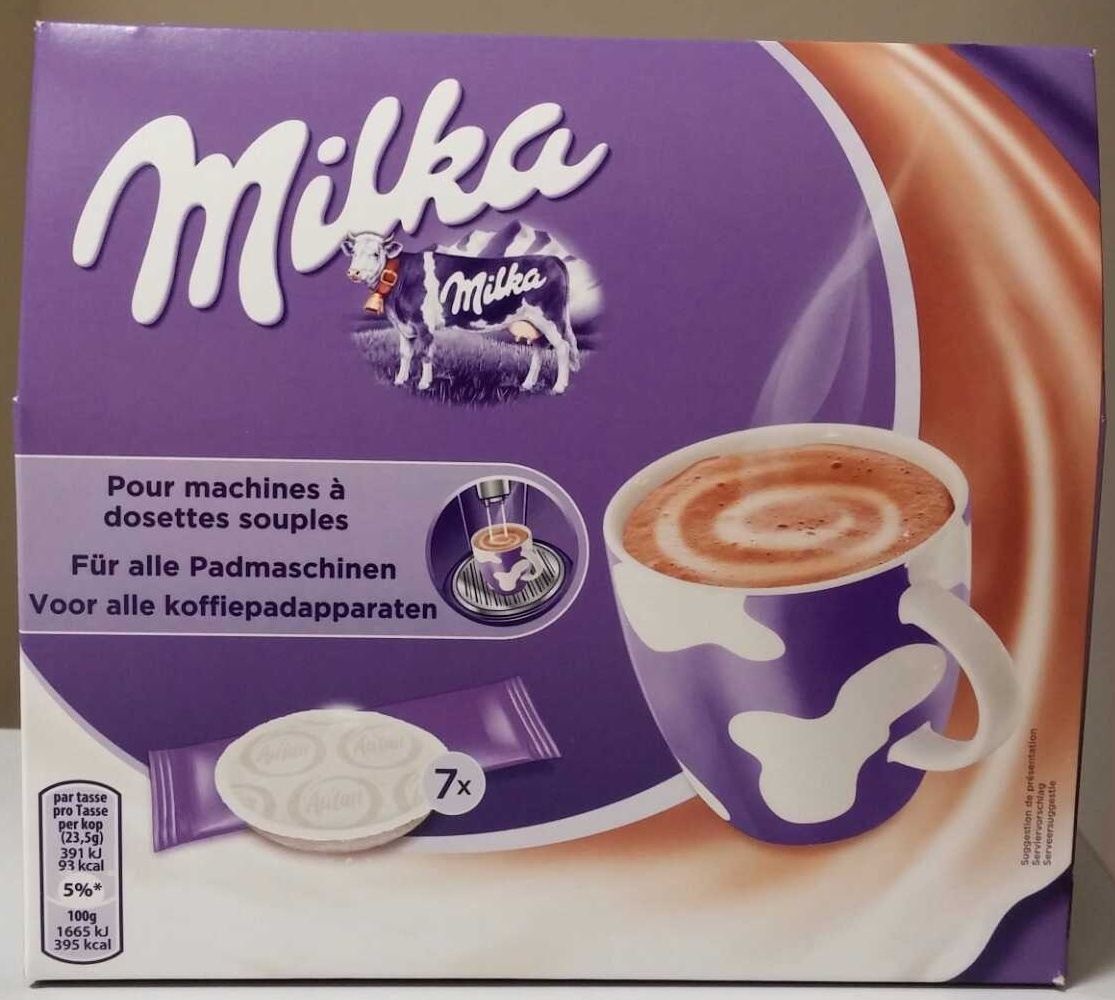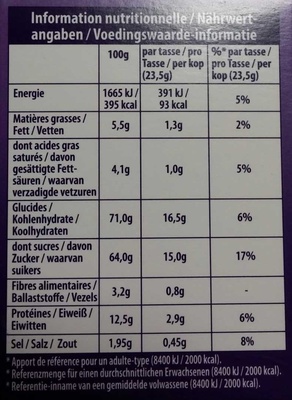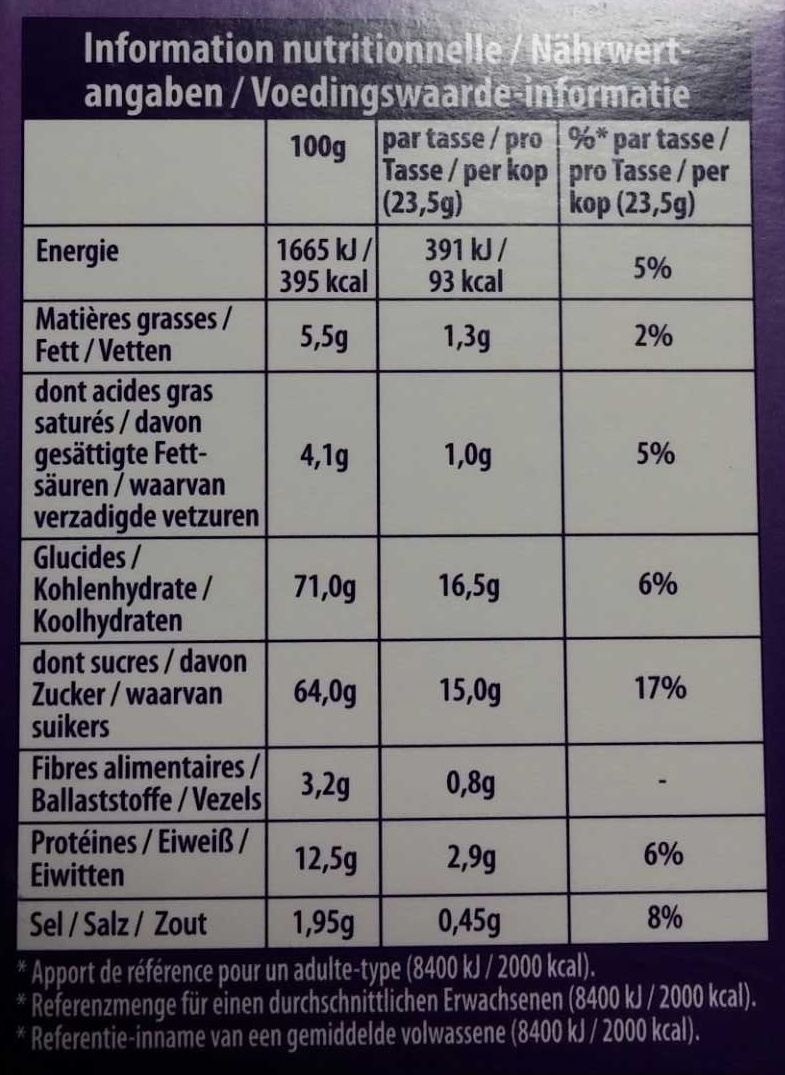Dosettes Milka au lait - 164,5g
This product page is not complete. You can help to complete it by editing it and adding more data from the photos we have, or by taking more photos using the app for Android or iPhone/iPad. Thank you!
×
Barcode: 7622300609993 (EAN / EAN-13)
Common name: Dosettes de chocolat au lait
Quantity: 164,5g
Brands: Milka, Kraft foods, Mondelez
Categories: Beverages, Dairies, Breakfasts, Hot beverages, Dried products, Dried products to be rehydrated, Instant beverages, Dehydrated beverages, Sweetened beverages, fr:Chocolat en dosettes
Stores: Carrefour
Matching with your preferences
Environment
Packaging
Transportation
Report a problem
Data sources
Product added on by crokmou
Last edit of product page on by roboto-app.
Product page also edited by basileus, manu1400, openfoodfacts-contributors, packbot, quechoisir, tacite.
If the data is incomplete or incorrect, you can complete or correct it by editing this page.








